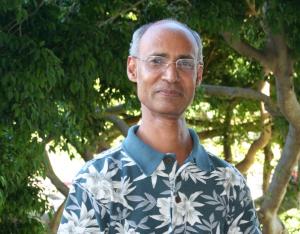Director of Water Resources Research Center working on carbon sequestration
Collaborating with two other universities on $897,000 EPA award
University of Hawaiʻi at MānoaContact:
Posted: Sep 14, 2010
Chittaranjan Ray, director of the Water Resources Research Center on the UH Mānoa campus, is part of a consortium with the University of Illinois and Stanford University that is examining hydrologic and geochemical uncertainties associated with geologic carbon sequestration in deep-saline reservoirs in the mainland Midwest.
The $897,225 award from the Environmental Protection Agency’s Science to Achieve Results (STAR) program is one of seven national grants awarded by the EPA for “Integrated Design, Modeling, and Monitoring of Geologic Sequestration of Anthropogenic Carbon Dioxide to Safeguard Sources of Drinking Water.”
Carbon sequestration is widely considered as a means to reduce atmospheric carbon dioxide levels. Injection of carbon dioxide into deep geologic formations (primarily saline) has been proposed as a method for large carbon dioxide-producing industries such as coal and other fossil fuel-based power plants, refineries, etc. to reduce their greenhouse gas emissions.
The injected carbon dioxide chemically reacts with the geologic formation and gets trapped. However, there is a chance that the carbon dioxide can gradually migrate upward to contaminate drinking water aquifers. Ray’s research focuses on the protection of these aquifers.
Said Ray, who is also a professor of Civil and Environmental Engineering at UH Mānoa, “Geologic carbon sequestration holds great promise as a means to reduce atmospheric CO2, however, it is important that EPA looks at the long-term implications of this process.”

